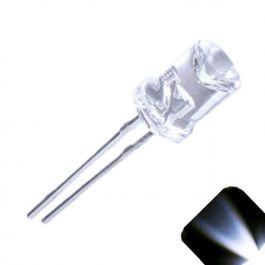Way back when (the 70s) I bought an old aviation switch box at a military surplus store. It was a small treasure chest, including a Ledex (rotary relay) and other cool stuff. It had a painted acrylic panel with engraved labels, which were illuminated by very interesting bulbs.
These bulbs were an opaque thin disk on the surface of the panel (no light visible), with the clear part of the bulb located within the panel thickness, and a threaded base to screw into a socket. There's a picture below. The effect was to edge-light the painted acrylic panel, so the labels were visible. I've never seen bulbs like this otherwise.
Have you seen anything similar today, possibly in an LED format? Something like this would be extremely handy to edge-light a laser-engraved piece of acrylic.

These bulbs were an opaque thin disk on the surface of the panel (no light visible), with the clear part of the bulb located within the panel thickness, and a threaded base to screw into a socket. There's a picture below. The effect was to edge-light the painted acrylic panel, so the labels were visible. I've never seen bulbs like this otherwise.
Have you seen anything similar today, possibly in an LED format? Something like this would be extremely handy to edge-light a laser-engraved piece of acrylic.

